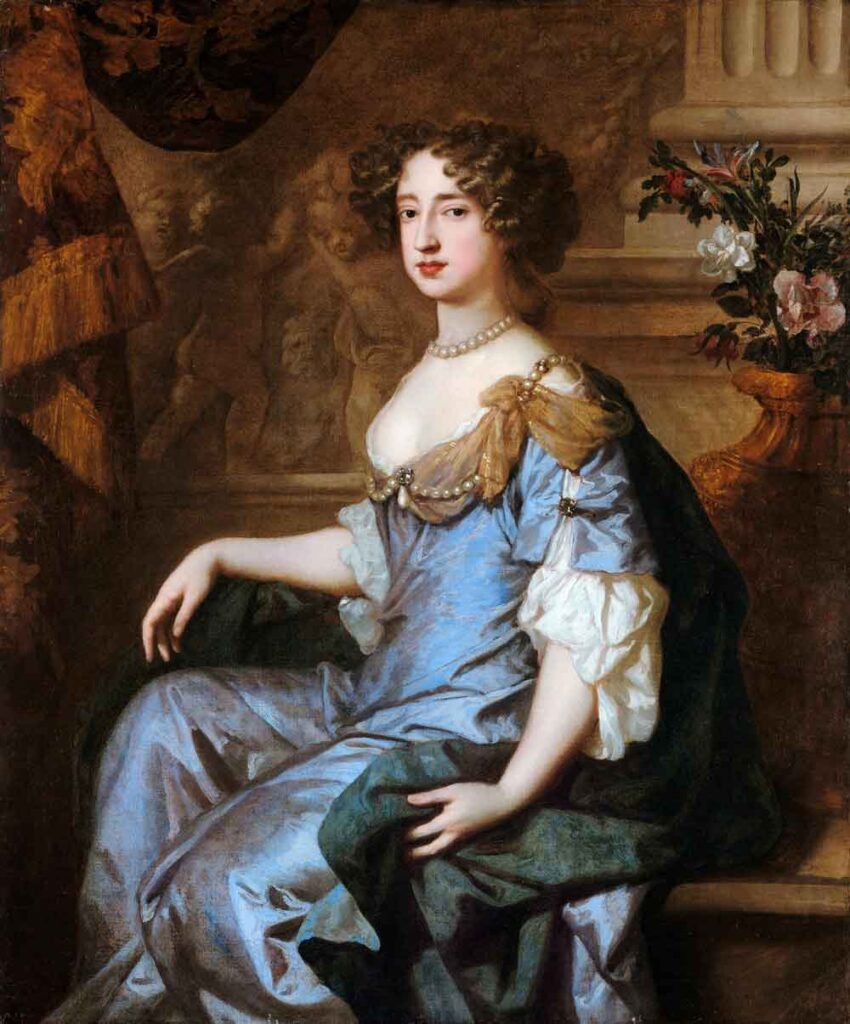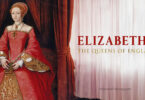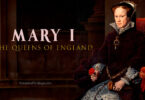Mary Stuart was the eldest daughter of James Stuart, Duke of York (later King James II of England), and his wife, Anne Hyde. She was born in 1662, one of eight children born to her parents. Of these children, only Mary and her younger sister Anne survived past childhood. Though never meant to be Queen of England at her birth, Mary nonetheless did inherit the throne in a most unusual and never-since-repeated way.
Mary’s uncle Charles was ruling England as King Charles II at the time of her birth. He had many illegitimate children but no legitimate children with his wife. This meant that his younger brother, James, was his heir apparent. Any male children of James’s were meant to be in line to the throne after that. Though James did have male children with his first wife, none of them survived him to take the throne.
James had converted to Catholicism with the influence of his wife, who converted after their marriage. Charles II, though, insisted that James’s children be raised as Protestants, as Charles himself was. Mary and her sister Anne were brought up in their own household at the behest of the King and only occasionally saw their parents and their maternal grandfather for visits.
After James’s wife crossed to the other side when Mary was only a young child, she became second in line to the throne after James. James remarried Princess Mary of Modena (in Italy) two years after his first wife crossed. His new wife was only four years older than his daughter Mary. This second marriage would cause much upheaval in England after James eventually inherited the throne and paved the way for Mary to be offered it while James was still alive.

When she was fifteen years old, Mary was betrothed to her first cousin, William III of Orange, the son of her father’s sister. In fact, because of his status as the grandson of an English king (that king being Charles I), William was actually fourth in the line of succession during Charles II’s life, after James, Mary, and Anne. Mary and William wed in 1677, with Mary still being only fifteen. She cried at the wedding but soon came to love her new husband very much and was known for her devotion to him. William was known to be equally devoted to Mary.
Mary was animated in personality and quite personable, qualities that made her popular with the Dutch people over whom her husband ruled. The fact that William was a Protestant made Mary’s marriage also popular in England. She became pregnant soon after her wedding but miscarried a few months after. At least three other suspected miscarriages occurred during the first few years of their marriage. After early 1680, there were no more known or suspected pregnancies, and Mary’s childlessness was a source of great unhappiness for her.
Mary’s father, James, became King of England in 1685 after the crossing of Charles II. At the moment James became king, Mary became the official heir presumptive of England.
James’s rule in England was not a popular one. As a Catholic, he used a royal decree to grant freedom of religion to non-Protestants, something the people of England did not approve of. James’s popularity among the English people took another hit when his second wife gave him a son. Normally, the birth of a legitimate prince would be a time of great joy in England, but as both of his parents were Catholic, the boy would be raised Catholic, as well (with no other king to order a Protestant upbringing, as with Mary and Anne). England, it appeared, was willing to tolerate a Catholic king as long as he had Protestant heirs. The birth of a Catholic heir was simply not to be tolerated.
Seven English nobles went to Orange, William’s kingdom in The Netherlands, and asked him to come to England with Mary and an army to depose James. William was concerned that he would be subordinate to his wife if he did this, as he was lower in the line of English succession than her. Mary assured him that if he were to take England, that she would only be his wife, would do everything she could to make sure he was king for life, and that she would always do as she promised in her marriage vows and obey him as her husband. William agreed to go to England and take the throne.
William issued a declaration that called James’s newborn son the “pretended Prince of Wales,” went to England with his army, and was quickly joined by the English Army and Navy, who did not want a Catholic monarchy. James attempted to flee the country but was intercepted. He made a second attempt to flee, which William purposefully allowed to succeed. James went to France with his wife and son, where he lived the rest of his life. While England did not want him as king, Scotland, which was still an independent country, believed James to be their rightful king and his son to be the proper heir to their kingdom. This set up a generation of fighting between England and Scotland over who was the rightful heir to both kingdoms.
Mary was sad about the way her father was deposed, but she also believed that she and William were doing the correct thing in order to secure a Protestant future for England. She was also happy about returning to the country of her birth to live. When she joined William in England shortly after he defeated James, she was happy for them but sad for James at the same time, so William ordered her to appear cheerful when she arrived in London. This caused her to be criticized by some who observed her entry as being uncaring of the plight of her father, when it could not have been farther from the truth.
As the throne of England was now considered vacant, it was offered jointly to William and Mary as equal monarchs. An argument had been made that Mary should be the sole monarch as the rightful hereditary heir, but William believed a husband could not be subject to his wife and wished to rule as a king rather than as a king consort to Mary. Mary believed that women should defer to their husbands and did not want to be Queen Regnant. So, both were offered the crown, making them England’s only official jointly crowned monarchs.
There had been a precedent for this only once before in English history, a century prior, when Queen Mary I married Prince Phillip of Spain. Phillip was technically made king, but only during Mary’s lifetime and with limited powers. After Mary’s crossing, Phillip no longer had any power or claim to it in England and went home to Spain to be its king. In the case of William and Mary, William could continue to rule as king if Mary crossed before him. Any children William and Mary had would be their heirs, followed by Mary’s sister Anne and her heirs, and finally, any children William might have if Mary crossed before him and he remarried. Catholics were officially barred altogether from the English line of succession.
William and Mary also had to agree to several reductions in the traditional power of the English monarch, which were laid out in the new English Bill of Rights. They still wielded enough powers to be considered independent rulers, but it wasn’t what monarchs of prior centuries enjoyed. They agreed to all conditions and were crowned together, the same day the Scottish parliament finally decided to recognize them as their monarchs, as well (though many people in Scotland still supported James and his son).
William was often away on business in Orange, where he still ruled on his own. During his absences, Mary reluctantly exercised power, and she did so capably and with a finely attuned diplomatic skill. She was always happy to hand the reins over to William, though. In her own words, she only wanted a “retired, quiet life.” She was extremely devout and attended prayers twice a day. Her greatest priority as monarch, aside from her devotion to William, was to promote the Protestant church.
Mary II crossed to the other side of smallpox in 1694. She was only thirty-two years old. In fact, she was long thought highly likely to outlive both William and her sister Anne, who were both known to be delicate in their health. She was tall ( 5’ 11”), and physically fit, walking many miles between her palaces on most days. Her crossing was a shock to everyone, and William was devastated. He never remarried.
William ruled as King of England until his own crossing in 1702. He was succeeded by Mary’s sister, Anne.




